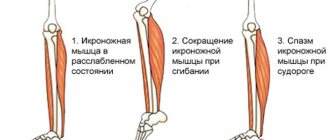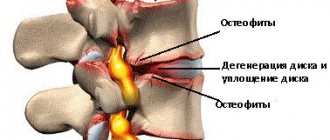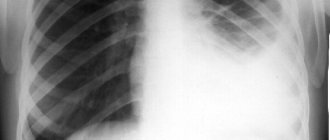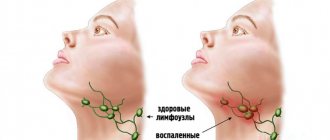A cramp is a sudden, involuntary, often painful contraction of a muscle. This happens to everyone from time to time: at night during sleep, during physical activity, and sometimes at rest. Spasm can occur in any part of the body - in the limbs, in the side, in the buttock, in the abdomen.
Often people have no idea why their muscles cramp. However, it is very important to find out the reasons for this, because a seizure can be both a physiological norm and a symptom of a serious disease. Let's look at this in detail.
Why do muscles cramp?
The reasons can be divided into two groups. The first includes those that do not have any underlying diseases. So, if the calf or gluteal muscles cramp in a dream, there is no physiological pathology in this. The seizure in this case is a parasomnia, that is, a phenomenon associated with sleep. Spasms that occur during increased physical activity also do not indicate an abnormality.
In other cases, such discomfort may be caused by:
- neurological disorders;
- compaction of muscle fibers against the background of physical inactivity;
- metabolic disorders;
- micronutrient deficiency;
- dehydration;
- poisoning (including cramps from a hangover).
There is also a disease called hypoparathyroidism. It is characterized by a convulsive syndrome that immediately affects muscle groups. This condition is caused by hypofunction of the parathyroid glands.
general characteristics
Various convulsive syndromes rank third in terms of overall incidence in the population after cardiovascular pathology and diabetes mellitus.
They account for 20% of all neurological disorders. Pathological symptoms more often occur in children (up to 15 years) and old age. Cramps are felt as involuntary spastic contractions of skeletal muscles - individual muscle groups or the entire body - of varying intensity, short-term or long-term. They arise spontaneously or are provoked by acute pathology or the action of external factors. Severe convulsive twitching of the muscles of the limbs and torso disrupts musculoskeletal function, leading to falls and injuries. Spastic tension is painful, often accompanied by arching or turning of the body, deviation of the head and eyes to one side. Tonic-clonic seizures are manifested by disturbances of consciousness and breathing, urinary incontinence, some are preceded by focal neurological symptoms. Single episodes have a favorable prognosis, but frequent seizures disrupt habitual activity and reduce the patient’s quality of life.
Types of seizures
If involuntary contraction of muscle fibers is caused by overexcitation of the cortical part of the brain, such convulsions are classified as epileptic. Non-epileptic ones are provoked by diseases of the central nervous system, imbalance of nutrients, and unfavorable external conditions.
Also, involuntary muscle contractions can be classified according to their nature:
- tonic – long-term, turning into a state of tension;
- myoclonic – short;
- clonic - jerky, cyclically repeating and alternating with relaxation.
Based on localization, these phenomena are divided into generalized and local. The former cover a significant part of the body (arms, legs, face, neck, side, torso, and sometimes extend to the respiratory tract). The latter occur in separate areas (for example, only in the back or only in the buttock).
Classification
According to the mechanism of formation, convulsions are classified as rapid hyperkinesis, in the structure of which the phasic component predominates. They are divided into epileptic and non-epileptic, primary (idiopathic) and symptomatic (secondary). Depending on the nature of the predominant involvement of skeletal muscles, there are several types of convulsive contractions:
- Tonic
. Sharp and prolonged (up to several tens of seconds) muscle tension caused by the arrival of a nerve impulse of long duration. Leads to “freezing” of the limbs or body in a forced position. - Clonic
. Muscle spasms are short-term and irregular in nature, with rapid alternation of periods of contraction and relaxation. They have a locomotor effect, accompanied by motor acts. - Mixed
. Convulsive attacks characterized by a change from a tonic component to a clonic one or vice versa are called mixed. In most cases they are generalized (widespread) in nature.
Tonic spasms underlie athetosis; a type of clonic spasms is myoclonus - sudden and sharp (lasting up to a second) contractions of the flexor muscles. Based on the group of muscles affected, cramps can be flexor (flexor), extensor (extensor), or mixed. An important criterion that has found a place in the clinical classification is the prevalence of seizures, which allows us to distinguish two types of paroxysms:
- Partial (focal)
. They arise due to local activity involving a group of motor neurons. Accompanied by clonic or tonic contractions. They can be simple (without loss of consciousness), complex, secondary generalized. - Generalized
. Excitation immediately covers the entire cortex without the presence of an isolated focus, so the muscles of the entire body are involved in a seizure. Paroxysms are clonic, tonic, tonic-clonic. Myoclonic and atonic seizures are also distinguished.
Some conditions combine signs of focal and generalized paroxysms or are of an unspecified nature. In pediatric practice, afebrile and febrile convulsions, neonatal and infantile paroxysms are distinguished. The international classification for some seizures takes into account the prognosis (benign, severe).
Causes of seizures in different parts of the body
Muscle spasm in a specific area of the body is caused by specific factors. Most often it occurs in the legs. The culprits may be overexertion (including due to intense training), varicose veins and hypothermia.
It can cramp not only the calf muscle, but also the femoral and even gluteal muscles. Sometimes the unpleasant sensation will spread throughout the entire leg.
Abdominal cramps are also common because most abdominal organs are composed of highly contractile smooth muscle cells. Most often, the organs of the digestive system spasm. This is how the well-known abdominal pain occurs. In women, contractions of the uterus (during menstruation, pregnancy or gynecological diseases) cannot be ruled out.
Muscle spasms in the back indicate diseases of the musculoskeletal system. This could be osteochondrosis, intervertebral hernia, degenerative changes in the spine.
How to stop night cramps
When a patient wakes up from severe pain, the first thing he does is try to rub the sore spot. Unfortunately, this method does not always work. Phlebologists recommend doing the following:
1. While lying down and feeling pain in the calf muscle, pull your foot towards you and stretch the muscle. After you have managed to relieve the cramps, work out both lower limbs, alternately pulling them towards you. This way you will resume blood circulation in the vessels.
2. The easiest way is to use a pin or needle. Inject yourself where the muscle is compressed. If you don’t have anything prickly on hand, you can simply pinch your leg in the shin.
3. Try to stand on the bare, cool floor and walk around. When you feel your muscles relax, stand on the floor for a couple more minutes, shifting from foot to foot. This simple exercise quickly awakens the blood and improves blood circulation.
Who usually experiences muscle cramps?
This trouble is familiar to everyone: men and women, children and the elderly, athletes and office workers. Only some people get to know her for natural reasons and rarely encounter her, while for others she becomes a frequent companion.
The risk group includes:
- children under 3 years of age who have experienced a rise in temperature above 38 degrees;
- elderly people suffering from vascular diseases and muscle atrophy;
- men engaged in heavy physical labor;
- athletes (football players, swimmers, runners);
- people who abuse alcohol and often experience hangovers;
Predisposes to muscle spasms and pregnancy. In mild cases, they are caused by a lack of vitamins due to changes in the body; in severe cases, they are caused by eclampsia.
Why do muscles cramp in pregnant women?
Carrying a child leads to significant changes in the body. In particular, metabolism is rebuilt. As a result, many expectant mothers are faced with magnesium deficiency, which is why cramps appear.
Pregnant women's legs are subject to greater stress due to weight gain. Hence the involuntary muscle contractions that occur in the evenings and at night. They can also be triggered by varicose veins, which often accompany hormonal changes.
Pregnant women often complain about back pain. The lumbar spine is under constant tension, forced to bend under the pressure of the uterus, so such sensations are normal. Therefore, expectant mothers are recommended to lie on their side to relieve the load on the spine.
Magvit is an excellent cure for seizures
One of the most affordable, safe and effective medicines for treating seizures is the drug “Magvit” , produced by the Belarusian pharmaceutical company “Minskintercaps”.
This is the first drug completely developed by domestic pharmacists and has a beneficial effect in the treatment of seizures.
“Magvit” successfully fights both primary and secondary magnesium deficiency, and the pyridoxine (vitamin B6) included in the drug improves the absorption of magnesium into the blood and its absorption at the cellular level.
The combined use of vitamin and magnesium citrate components of the drug is justified by the following clinically proven data:
- magnesium and B6 enhance and complement the pharmacological effects; — the vitamin helps reduce the amount of magnesium excreted from the body and increases its content in red blood cells; - absorption and assimilation of magnesium improves; - Pridoxine, under the influence of magnesium in the human liver, transforms into the active metabolite pyridoxal-5-phosphate.
Diagnostic methods
If the muscles cramp regularly and the person experiences severe pain, it is necessary to consult a doctor. You should also be concerned if this symptom does not have a clear cause (it is not associated with training or staying in an uncomfortable position for a long time).
A common reason why people put off seeing a doctor is not knowing who can help with the problem. It’s better to start with a therapist, and he will give you a referral to a specialist:
- neurologist;
- gastroenterologist;
- phlebologist;
- gynecologist;
- endocrinologist.
After the initial examination, collecting complaints and receiving test results, the doctor will tell you what additional diagnostic methods will be needed. If your stomach cramps, you will be referred for an ultrasound, your back for an X-ray, your neck or calf muscles for a Doppler ultrasound of the blood vessels.
Diagnosis, treatment and prevention of seizures
You should eat enough foods containing magnesium.
If you have regular seizures that have been bothering you for a long time, do not put off visiting a doctor. First, you should visit a therapist (if seizures occur in a child, then a pediatrician), who will conduct an examination, prescribe the necessary examination and, if necessary, recommend consultations with specialists of a narrow profile - a neurologist, endocrinologist, cardiologist, nephrologist and others.
If the cause of seizures is any somatic pathology, then with adequate treatment, the problem of sudden muscle contractions will soon be resolved.
If the results of the examination show that there are no serious diseases that could provoke seizures, the doctor will give the patient recommendations, if followed, his condition will improve in the near future.
- Proper nutrition.
- It is necessary to divide the daily diet into 5-6 meals, and the portions should not be voluminous.
- The basis of the diet should be complex carbohydrates - cereals, durum wheat pasta, vegetables and fruits.
- Fats also take part in the mechanism of proper muscle contraction - a small piece of butter or fatty red fish will enrich the body with this essential nutrient.
- Don’t forget about foods rich in magnesium (nuts, legumes, carrots, greens, seaweed), potassium (bananas, dried apricots, melon, potatoes), calcium (milk and dairy products), B vitamins (dairy products, walnuts , red fish).
- A healthy lifestyle (adequate physical activity, avoiding heavy loads on the legs, quitting smoking).
- Sleep in a comfortable bed in a position with your legs slightly elevated above the axis of your torso and head.
- Taking relaxing foot baths with sea salt - dissolve 3 tablespoons of sea salt in 5 liters of water at room temperature.
- Massage your feet with warming ointment or cream before bed.
- Refusal of uncomfortable shoes, high heels (shoes should be comfortable for your feet, the height of a stable heel should not exceed 4-5 cm).
- If you have chronic venous insufficiency, wear compression stockings and tights (the degree of compression of these things can be different - to choose the right one, consult a phlebologist).
- Treatment of flat feet, including wearing orthopedic shoes and/or special insoles.
- Taking medications containing multivitamin and mineral complexes (calcium-D3-Nycomed, Magne-B6, asparkam).
What treatment is possible
If diseases of the internal organs are identified that cause muscle cramps, then treatment of the underlying disease will eliminate the accompanying symptoms. Depending on the location, this may include medication, massage, or physical therapy.
Uncontrolled use of anticonvulsants is unacceptable. They are prescribed to patients with epilepsy. If a person sometimes experiences cramps in the gluteal muscle or neck, you should not abuse such medications.
First aid also depends on the location of the spasm. If it occurs in the leg (from the buttock to the foot), you need to rub the muscles, restore blood circulation in them, and warm them up. The back should be kept at rest. But with a belly it’s better not to take risks and call a doctor right away, especially for women who know about their pregnancy.
What to do if a muscle is severely cramped
It is not always possible to easily endure such an attack by limiting yourself to rubbing the affected area. The pain can be unbearable. It can be removed with a sharp impulse.
For cramps due to a hangover, the patient should be placed in a horizontal position and the legs should be raised to reduce blood flow to the extremities. At the same time, it is important to make sure that we are not talking about an epileptic attack (they are not uncommon in alcohol intoxication).
In older people, involuntary muscle contractions are often a warning sign of stroke. Convulsions may give way to paralysis. Timely treatment is important here, so it is better to call an ambulance immediately.
First aid
There are several methods to stop spastic contractions of the limbs:
- Actively massage the cramped leg.
- Gently stretch the muscles of the lower leg or foot.
- Strongly relax tissue.
In some cases, the attack makes itself known in advance. Cramps begin with tension, numbness, pulling pain in the limb, or the legs begin to twist. What to do if you notice these symptoms:
- Rotate your leg, changing its position.
- Achieve relaxation of the muscles of the limb.
- Normalize blood circulation in the feet and legs.
The fastest way to eliminate spasms is muscle stretching. To eliminate night cramps in the lower limb, you need to pull your toes towards you with your hands. In this case, you should try to fully straighten the knee to relax the soft tissues.
If cramps occur frequently at night, you should do the following:
- Sit down or take an upright position with your feet flat on the floor. If possible, take a few steps on a cool surface.
- Gently rub the tense muscle, stroking it, patting it, shaking it.
- Place your leg in an elevated position, for which you should place a pillow under your heels.
Emergency help for tonic leg spasms may include pinching the pulled muscle or a pin prick. These methods instantly relieve cramps both day and night. You can relax the muscle by pinching your leg or biting it. In this case, a reflex switching of activated nerve endings occurs with another stimulus.
Prevention
The best prevention of involuntary muscle contractions is moderate physical activity. Regular exercise helps keep your muscles under control. The tissues will not suffer from physical inactivity or sudden overload. This is equally beneficial for both men and women at any age.
A set of exercises to prevent cramps always includes stretching. It is useful to do it before bed so that unpleasant symptoms do not occur at rest.
Since muscles often cramp due to hypovitaminosis and lack of microelements, it is important to eat a balanced diet. If you cannot get them in sufficient quantities from food, you should additionally take vitamins B and E, as well as magnesium, calcium and potassium supplements. It is also important to drink enough fluids, because similar discomfort occurs due to dehydration.









